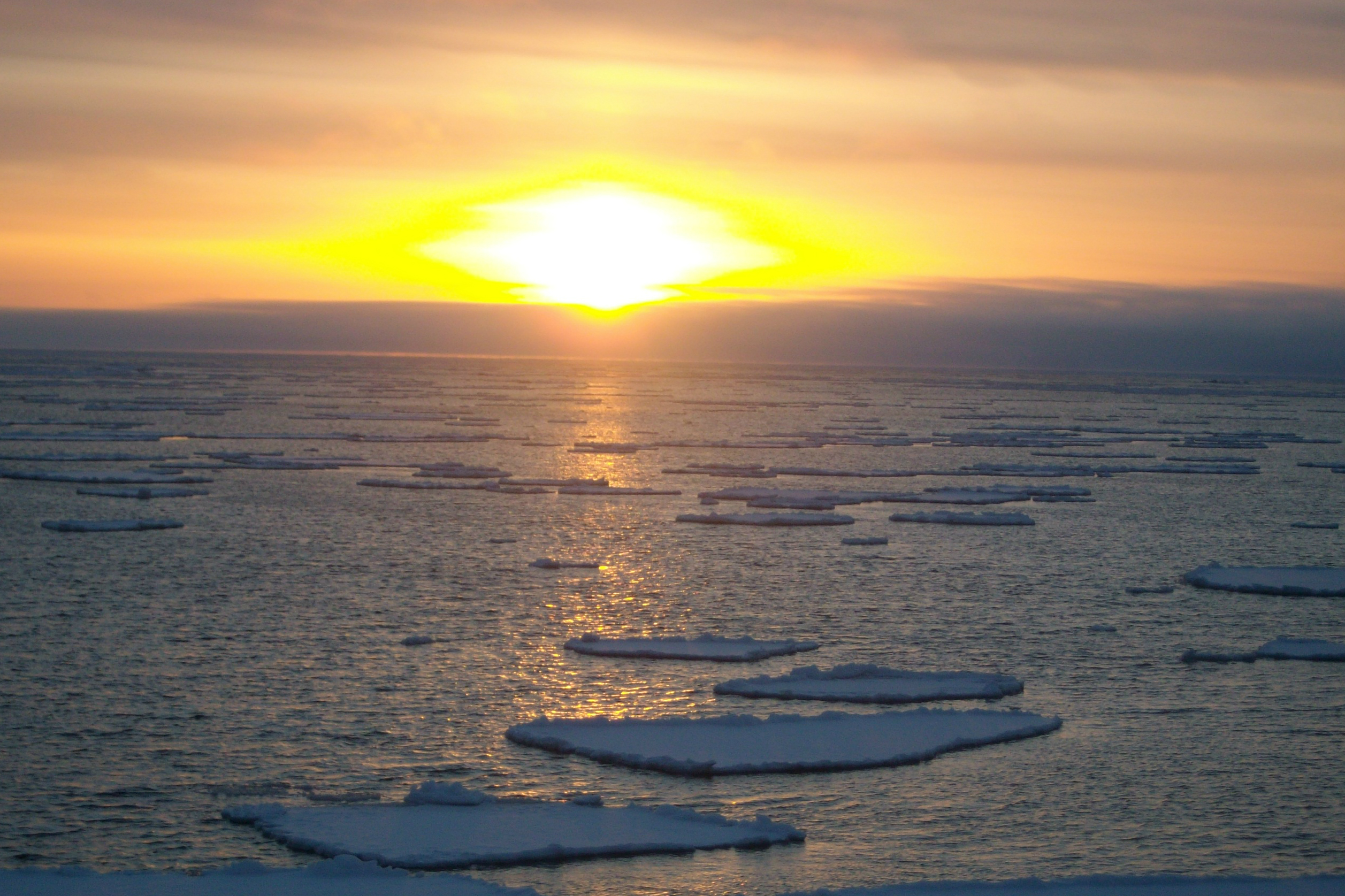Why the Bering Sea is a hotspot of climate change — and a sentinel for rest of the world
“It’s one of the very loud alarm bells of just how connected the Arctic is to the subarctic and to the global system.”

The Bering Sea is the transition zone between the Pacific and Arctic oceans. Everything from seabird and marine mammals to ships traveling between the two oceans goes through the Bering Sea and the narrow Bering Strait that separates Asia and North America.
Ocean heat also passes through the strait, flowing north into the Chukchi Sea.
Because of its critical position in the world, the rapidly transforming Bering Sea is a sentinel of Arctic climate change, with effects that stretch well beyond the Arctic, said Matthew Druckenmiller, a research scientist at the Colorado-based National Snow and Ice Data Center.
“It’s one of the very loud alarm bells of just how connected the Arctic is to the subarctic and to the global system,” said Druckenmiller, one of the lead editors of the annual Arctic Report Card released last week by the National Oceanic and Atmospheric Administration.
[Indigenous voices in this year’s Arctic Report Card explain the human impacts of Bering Sea upheaval]
That annual report gave special attention to the Bering Sea’s past two winters of ice loss and the cascading effects of that meltdown: heated-up marine temperatures; seabird, marine mammal and fish die-offs; a scrambling of fish stocks important to a multibillion-dollar seafood industry; and shocks to the food sources, public safety and traditional cultures of Indigenous peoples of the region.
An important point about the Bering Sea change is that it happening in the winter, with effects that ripple through the rest of the year, Druckenmiller said. Many of the obvious Arctic climate change events — such as the retreat of sea ice, permafrost thaw, the melt of high-latitude glaciers and the growing prevalence of boreal wildfires — happen in summer.
The Bering Sea has seen a dramatic loss of winter ice, but that isn’t the only cold-season climate shock.
The frequency of rain-on-snow events is increasing across the Arctic, with devastating effects for some animals like reindeer and caribou. Warming in Alaska has been most pronounced in winter, with midwinter temperatures in eastern and northern Alaska warming over the last 50 years by 7.3 degrees to 9.2 degrees Fahrenheit. And spells of winter warmth appear connected to cold snaps in the Lower 48, Druckenmiller said.
But the loss of the Bering’s winter ice stands out among other winter changes, he said. “I don’t think anything really compares to what we’ve seen in the Bering Sea in the last couple of years,” he said.
Fish stocks in the Bering Sea, a region that supplies about half the nation’s commercial seafood catch, have undergone especially dramatic changes.
As boreal species like Pacific cod and pollock have shifted from the southern Bering Sea to the north, so have the harvesters. This year there were 11 cod catcher-processors — industrial-scale vessels with seafood processors aboard — harvesting cod between St. Lawrence Island and Little Diomede Island in the Bering Strait, said Simon Kinneen, chairman of the North Pacific Fishery Management Council. “That’s way far north,” Kinneen said. “There’s all sorts of newness to that.”
South of the Bering Sea, in the Gulf of Alaska, successive marine heatwaves have killed off much of the Pacific cod. The North Pacific Fishery Management Council, which slashed Gulf of Alaska cod quotas by 80 percent for 2018 and 2019, took an even more drastic step earlier this month and shut down the entire fishery for 2020.
Kinneen said he is hopeful that cold will return and fish in both the Bering Sea and the Gulf of Alaska will revert to normal in the coming years. A change in wind direction could bring back ice and more normal temperatures, he said. “I think at some point it’s going to cool down,” he said.
But Kevin Wood, a research scientist at NOAA’s Pacific Marine Environmental Laboratory, said returns to what was once normal are likely to be only temporary.
The “cold pool,” a mass of super-chilled waters that separated fish stocks and used to appear dependably in the central Bering Sea, could well return, he said at the Dec. 10 news conference where NOAA released the Arctic Report Card.
“But I think in the long run we’re going to see more and more events like we’ve seen this year. So there may be some gaps, where there’s a rebound perhaps, but I think this is going to turn out to be fairly typical in the not-too-distant future,” Wood said at the news conference.
The expanding open-water season has impacts on land, creating more risks of storm surges, floods and erosion.
Already, high wind events that create those dangers have become more frequent at coastal sites in northern and northwestern Alaska, according to a newly published study that was presented at last week’s annual conference of the American Geophysical Union. And under current greenhouse gas emissions trends, those events are likely to become much more frequent in the future in northwestern Alaska, according to the study, by scientists at the University of Alaska Fairbanks and Dartmouth College.
The study examined high wind events recorded since 1980 at 67 Alaska locations (nearly all at airports), and projects trends into the future, based on separate climate models. By the end of the century, according to the study’s calculations, high wind events could triple in frequency at Nome and are expected to double at Utqiagvik, under current rates of greenhouse gas emissions.
That is bad news for Bering Sea coastal communities that are already coping with fall and winter storm damage, flooding and erosion — as happened in November.
“Wind is important because it causes a lot of damage. It drives coastal flooding. It drives infrastructure damage,” John Walsh, chief scientist for UAF’s International Arctic Research Center and a co-author of the study, said in a statement released by the university.